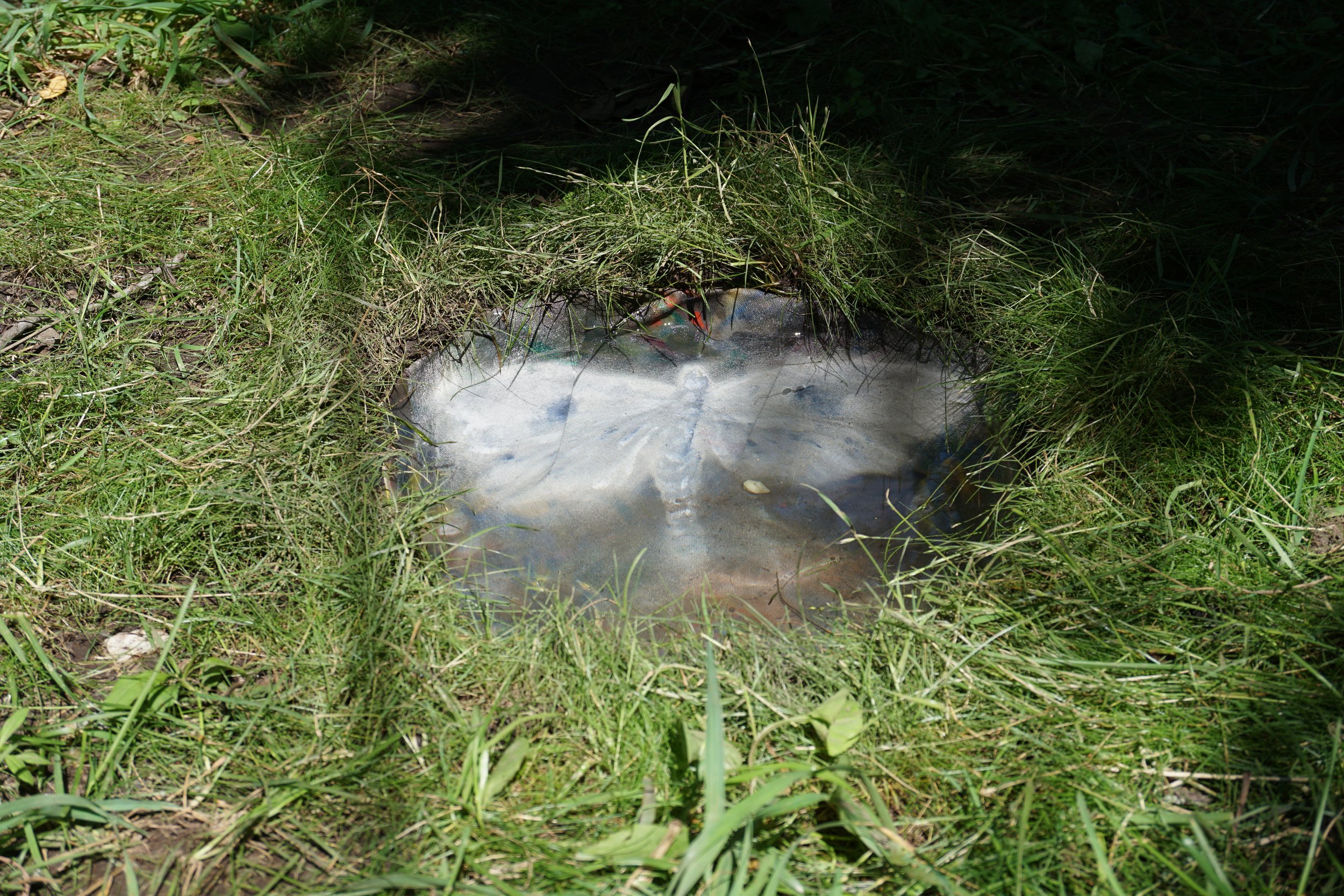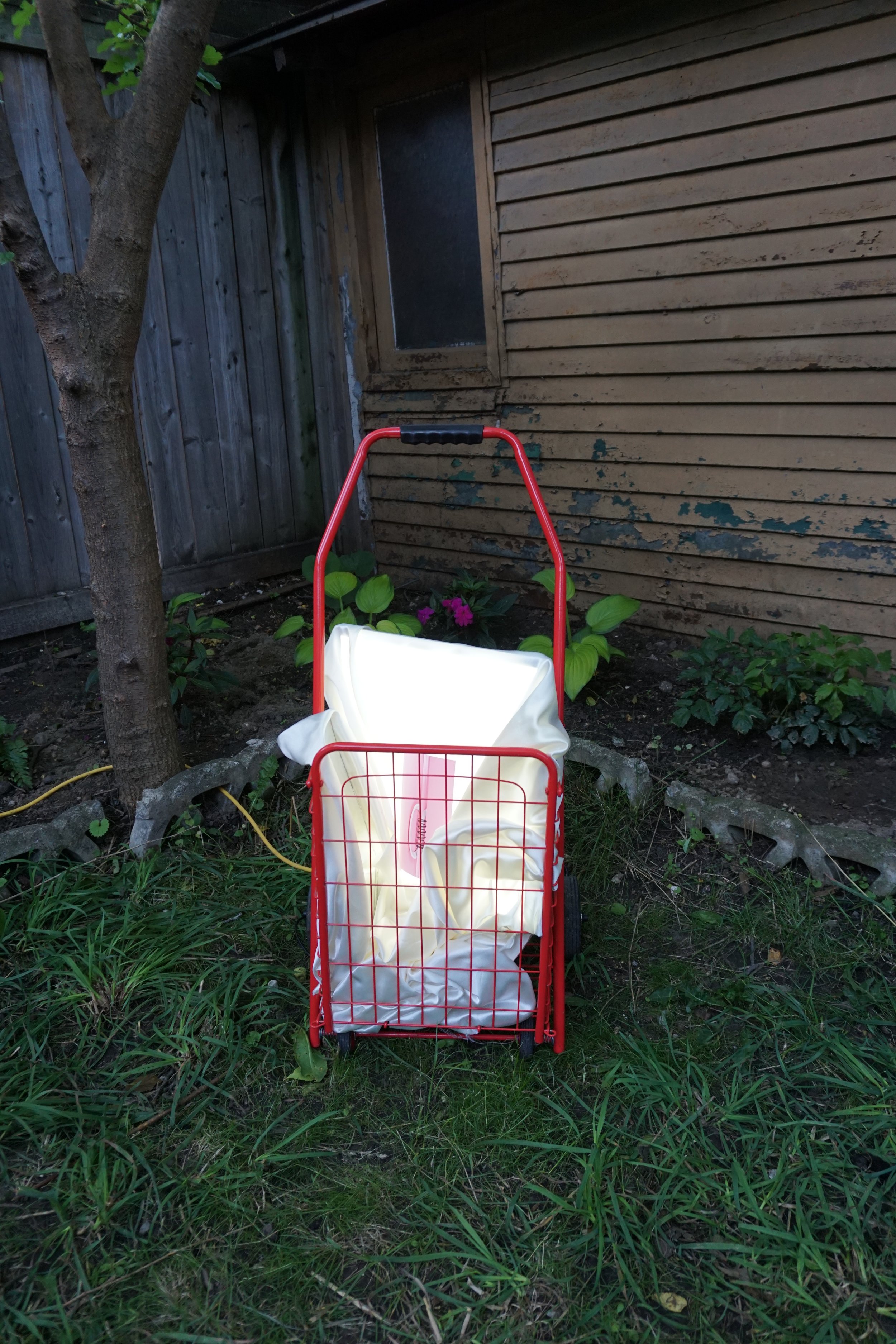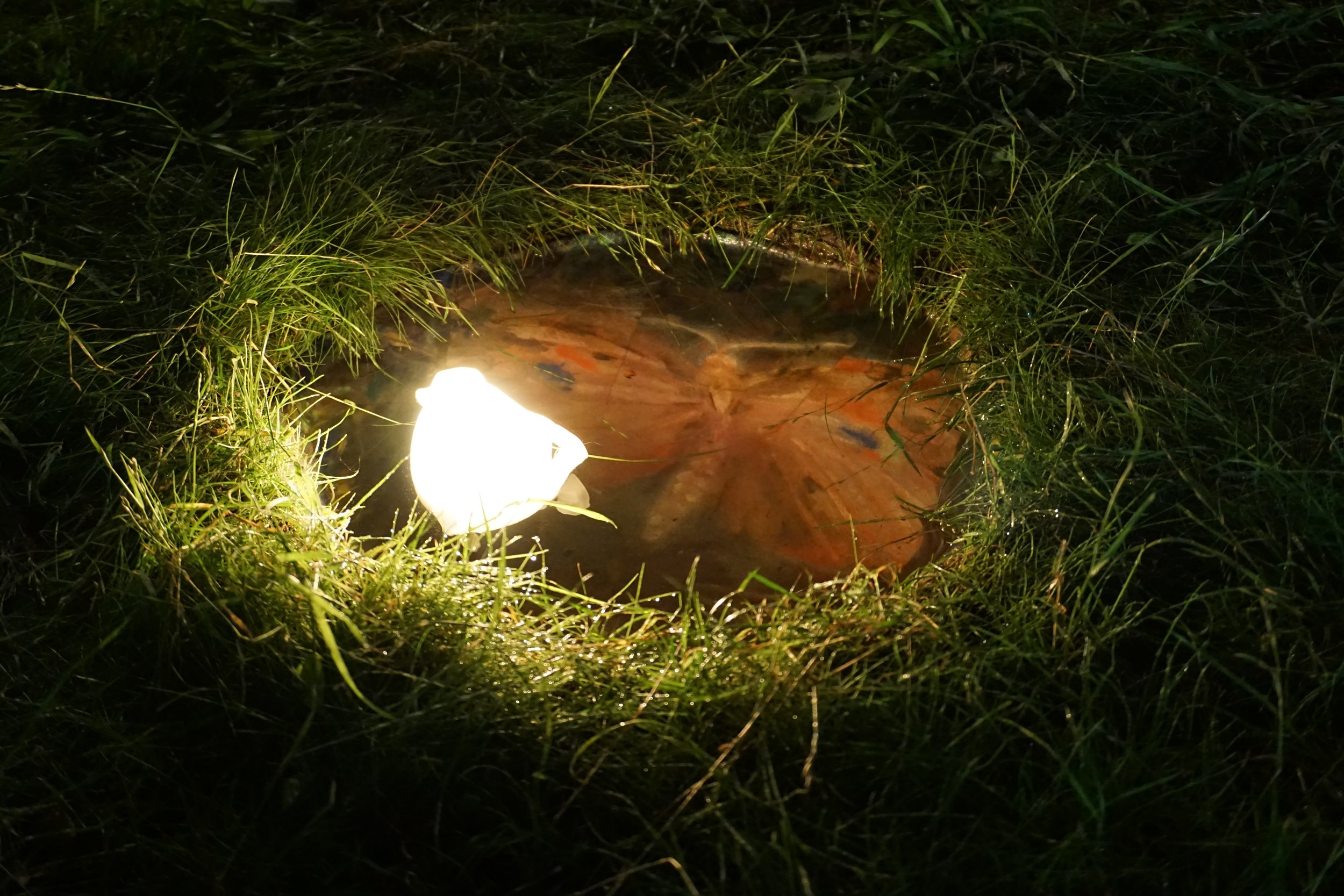Volume I, July 10th, 2021
Shannon Garden-Smith, SK Maston, Alison Postma
Garden Variety launched in July 2021 with new works by Shannon Garden-Smith, SK Maston, and Alison Postma that explored the porous boundary between natural decay and constructed form. Across three distinct approaches, the artists addressed questions of material vulnerability, perceptual slippage, and the quiet collisions between domestic and ecological systems.
Shannon Garden-Smith’s the bones of a mammal or the pith of a stem (shades) I; II consisted of sheets of pigmented gelatin embedded with dried plant clippings collected over the course of multiple seasons. Installed outdoors, the works appeared like brittle glass or resin but were made of processed animal collagen—structurally temporary and materially unstable. Subject to sunlight and rain, the sculptures were left to soften, warp, and dissolve throughout the day, offering a direct confrontation with entropy as form.
In waterhold, SK Maston excavated a hole in the backyard earth, creating a site of attention rather than display. This gesture emphasized the layered, unseen ecosystems beneath our feet, framing soil as an inhabited space structured by insect life, microorganisms, and the passage of time—an inverted landscape operating on a scale and logic beyond human comprehension.
Alison Postma’s Yard Sale staged a domestic constellation of found objects—a visual language of consumer debris and personal accumulation. By arranging these objects within the context of a public exhibition, Postma explored how the things we collect shape and distort our sense of self, acting as projections of imagined identities rather than evidence of a stable core.
Together, the three works set the tone for Garden Variety’s ongoing inquiry into temporality, material precarity, and the domestic as a site of aesthetic and ecological reflection.











